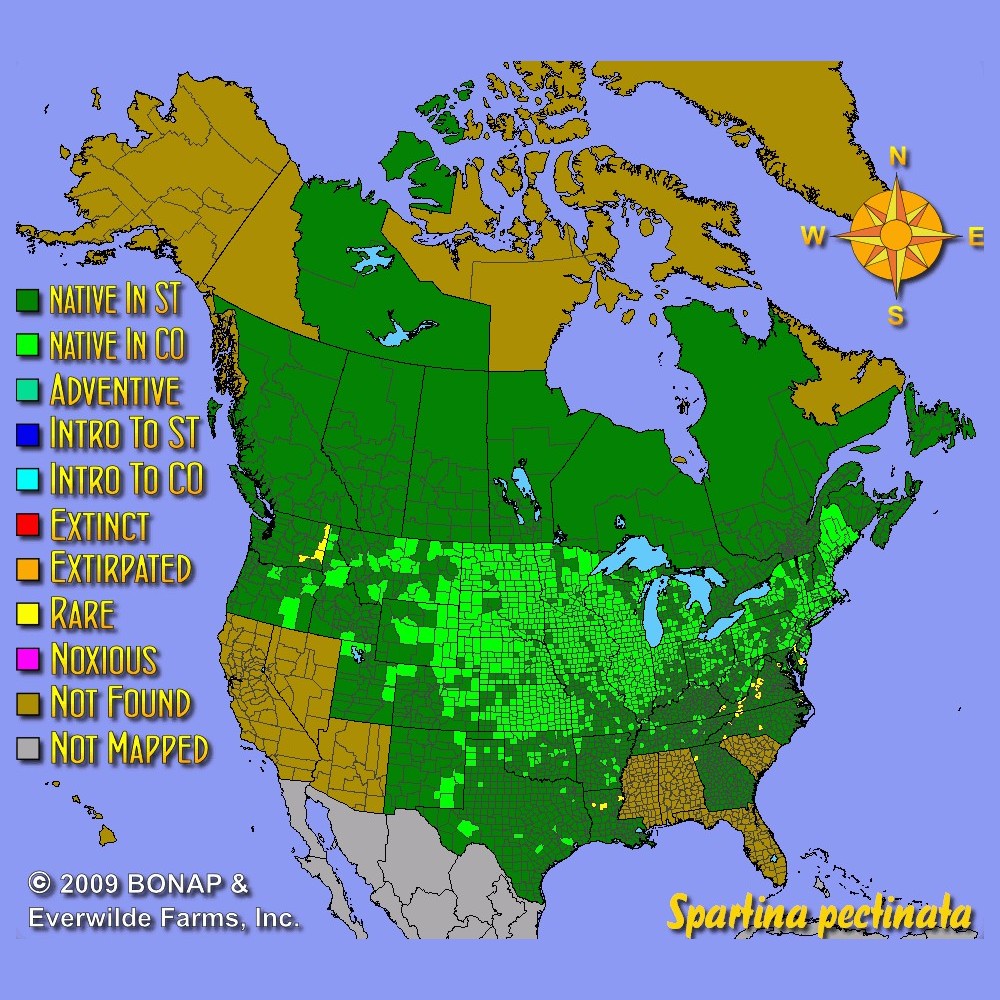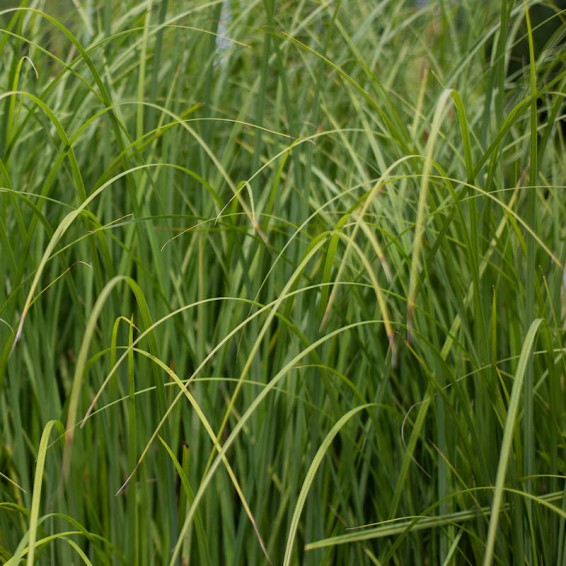Cord Grass Seeds
- HOW TO GROW
- FAST FACTS
- REVIEWS
HOW TO GROW
Sowing: Direct sow either in late fall or early spring. Plant the Spartina Pectinata seed just below the surface of the soil, compacting the soil very firmly. Keep the soil lightly moist until germination, since this prairie cord grass seed cannot germinate in dry soil.
Growing: Water seedlings occasionally until they become established. This plant prefers moist or wet soil, though it tolerates short periods of drought. It adapts well to various soil types such as sand, clay, and gravel with adequate moisture. This plant grows quickly and will spread by self-seeding, becoming rather weedy in good growing conditions. Mature plants can be divided. This plant makes an very good choice for erosion control, and also provides forage and cover for birds and other wildlife. Its is also popular for wetland restoration and for strengthening stream banks.
Seed Saving: At the end of the season, the prairie cord grass seed heads will begin to ripen. Strip the mature seed from the stem; gloves may be necessary for protection. Store the prairie cord grass seed in a cool, dry place.
FAST FACTS
Common Names: Cord Grass, Tall Marshgrass, Sloughgrass
Latin Name: Spartina pectinata
Species Origin: US Native Grass or Sedge
Type: Native Grasses, Warm Season
Life Cycle: Perennial
USDA Zones: 2, 3, 4, 5, 6, 7, 8
US Regions: Mountain, Arid/Desert, Plains/Texas, Midwest, Northern, Northeast, Southeast
Seeds per Ounce: 11,200
Stratification: No Stratification
Germination Ease: No Stratification
Sunlight: Full Sun, Part Sun
Height: 96 Inches
Color: Green, Brown
Bloom Season: Blooms Late Summer, Blooms Early Fall
Great product, Great packaging
Great product. Purchased this grass for products to be made in the upcoming years. It is perfect. I have made the products before from local sourced cord grass. Starters were hard to get so a big Thank you for offering. The packaging is perfect as well! It will keep the seeds viable for the 3 months until planting time!
Awesome
This grass looks so nice at the stream edge! It makes the environment look healthy and the green colors really stand out! It creates a breeding ground for small minnow-sized fish. Really important restoration grass.
DESCRIPTION

HOW TO GROW
Sowing: Direct sow either in late fall or early spring. Plant the Spartina Pectinata seed just below the surface of the soil, compacting the soil very firmly. Keep the soil lightly moist until germination, since this prairie cord grass seed cannot germinate in dry soil.
Growing: Water seedlings occasionally until they become established. This plant prefers moist or wet soil, though it tolerates short periods of drought. It adapts well to various soil types such as sand, clay, and gravel with adequate moisture. This plant grows quickly and will spread by self-seeding, becoming rather weedy in good growing conditions. Mature plants can be divided. This plant makes an very good choice for erosion control, and also provides forage and cover for birds and other wildlife. Its is also popular for wetland restoration and for strengthening stream banks.
Seed Saving: At the end of the season, the prairie cord grass seed heads will begin to ripen. Strip the mature seed from the stem; gloves may be necessary for protection. Store the prairie cord grass seed in a cool, dry place.
FAST FACTS
Common Names: Cord Grass, Tall Marshgrass, Sloughgrass
Latin Name: Spartina pectinata
Species Origin: US Native Grass or Sedge
Type: Native Grasses, Warm Season
Life Cycle: Perennial
USDA Zones: 2, 3, 4, 5, 6, 7, 8
US Regions: Mountain, Arid/Desert, Plains/Texas, Midwest, Northern, Northeast, Southeast
Seeds per Ounce: 11,200
Stratification: No Stratification
Germination Ease: No Stratification
Sunlight: Full Sun, Part Sun
Height: 96 Inches
Color: Green, Brown
Bloom Season: Blooms Late Summer, Blooms Early Fall
Reviews
Review
Great product, Great packaging
Great product. Purchased this grass for products to be made in the upcoming years. It is perfect. I have made the products before from local sourced cord grass. Starters were hard to get so a big Thank you for offering. The packaging is perfect as well! It will keep the seeds viable for the 3 months until planting time!
Review
Awesome
This grass looks so nice at the stream edge! It makes the environment look healthy and the green colors really stand out! It creates a breeding ground for small minnow-sized fish. Really important restoration grass.



